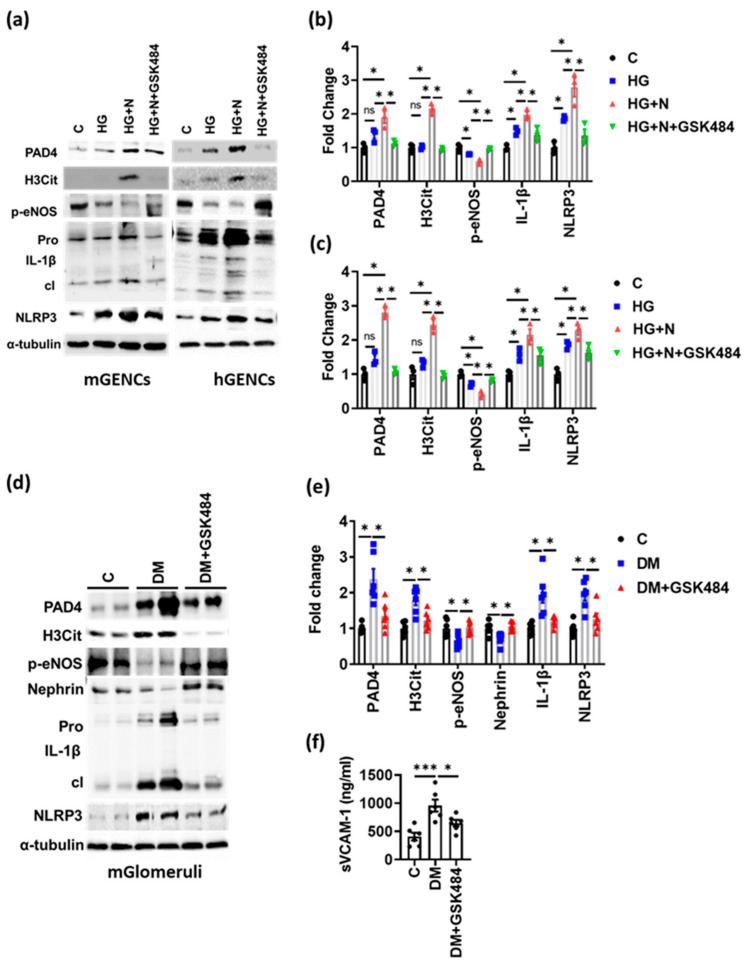Figure 4.
PAD4 inhibition ameliorates inflammasome activation and endothelial dysfunction. (a–c) Representative immunoblots ((a); bar graph summarizing results: (b,c)) of mGENC (a,b) and hGENC (a,c) showing the expression of marker genes for NETs (PAD4, H3Cit), inflammasome activation (IL-1β: cleaved form—cl, inactive preform—Pro; NLRP3) and endothelial dysfunction (p-eNOS) in control cells (C) and cells exposed to high glucose alone (25 mM, HG) or to high glucose plus neutrophils without (HG+N) or with GSK484 (HG+N+GSK484). (d,e) Representative immunoblots (d) and bar graphs (e) summarizing results of markers for NETs, inflammasome and endothelial dysfunction (as in (a)) in glomerular lysates from diabetic mice without (DM) or with GSK484 (DM+GSK484) compared to non-diabetic controls (C). (f) Bar graph summarizing results from ELISA for plasma sVCAM-1 in diabetic mice without (DM) or with GSK484 (DM+GSK484) compared to non-diabetic controls (C). a: n = 3 independent repeat experiments; (d,f): n = 6 mice in each group; (a–c,e,f): * p < 0.05, *** p < 0.001, ns: non-significant, ANOVA.

